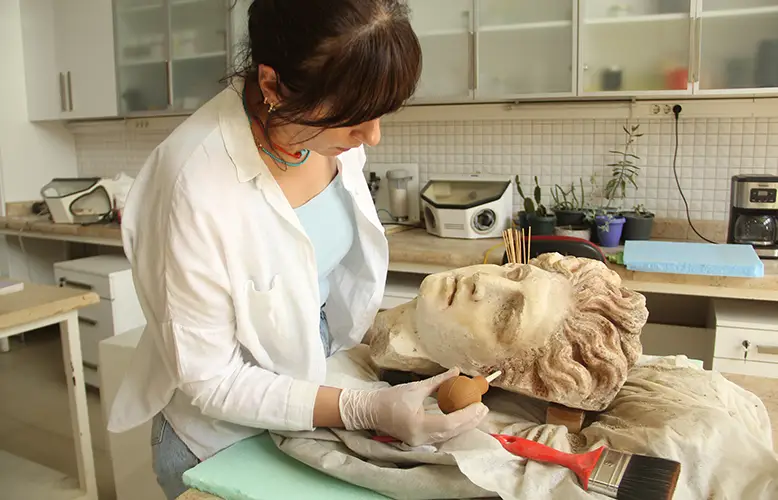
Anatolia, a millenia-old crossroads of civilizations, is home to some of the earliest settlements on earth. Today, it boasts unique treasures from these ancient cultures.
The richness of these lands is gradually being uncovered through year-round excavations led by the Ministry of Culture and Tourism. This year, experts made significant discoveries that will once again impact the historical narrative.
Golden Age of Turkish Archaeology
Türkiye has emerged as a global stronghold for archaeology through numerous archaeological excavations and restoration projects aimed at preserving its cultural heritage. The country plans to achieve in the next four years what has been accomplished in the past 60.
As part of this effort, 2024 has been declared the ‘Golden Age of Turkish Archaeology.’ The number of archaeological projects across the country has increased by nearly 100 in only three years. Additionally, Türkiye continues to prioritize conservation and visitor arrangements at excavation sites.
Archaeological Highlights in 2024
Discovered in the ancient city of Laodicea in Denizli a group of extraordinary sculptures were unearthed depicting Scylla, the man-eating monster, the body of Odysseus, statues of his companions, and the bow of his ship. The statues, with their well-preserved original paint and baroque style of the Hellenistic period, are exceptional. Another major find was found a two-hour drive away at the UNESCO World Heritage site of Aphrodisias in Aydın, where archaeologists unearthed a nearly 2,000-year-old Zeus head sculpture with minimal damage. In Kahramanmaraş, a 13,000-year-old bone sewing needle was unearthed in Direkli Cave, believed to be linked to the city’s historical textile foundations.
At Karahantepe, one of the world’s oldest Neolithic sites, archaeologists uncovered a carved figure of a running wild donkey – the first depiction of a wild animal in motion. The site is part of the ‘Taş Tepeler Project’ in Şanlıurfa. In Sivas, 3,900-year-old handprints, believed to date back to the Assyrian trade colonies, were discovered in the ancient Hittite city of Kayalıpınar, providing a rare glimpse of individual marks left nearly four millennia ago. Another striking discovery was a 3,600-year-old bronze dagger from the Minoan civilization of Crete, found off the coast of Kumluca, Antalya. The find is reshaping our understanding of Mediterranean trade routes and cultural interactions.

In Aspendos, one of Pamphylia’s grandest cities, 2,000-year-old statues of Zeus and Aphrodite were discovered. Meanwhile, in the ancient town of Myra’s port, Andriake, decorative panels made using the millefiori glass technique were found – the first of their kind in Türkiye. Additionally, three bronze shields and a helmet dedicated to Haldi, the chief god of the Urartians, were uncovered in the ancient city of Ayanis in Van, reflecting the high level of Urartian metal craftsmanship. Excavations across Türkiye continue to unearth artefacts that shed light on ancient history.
Cultural Recoveries of the Year
Türkiye remains dedicated to repatriation of looted artefacts from abroad, a mission reinforced by notable successes this year. The country recently secured the return of 14 archaeological and ethnographic artefacts from the United States. Among the recovered items are two bronze heads, a giant bronze statue from the ancient city of Boubon in Burdur, ceramic works, coins, a jewellery piece, and two Ottoman-era daggers, all significant cultural treasures.





